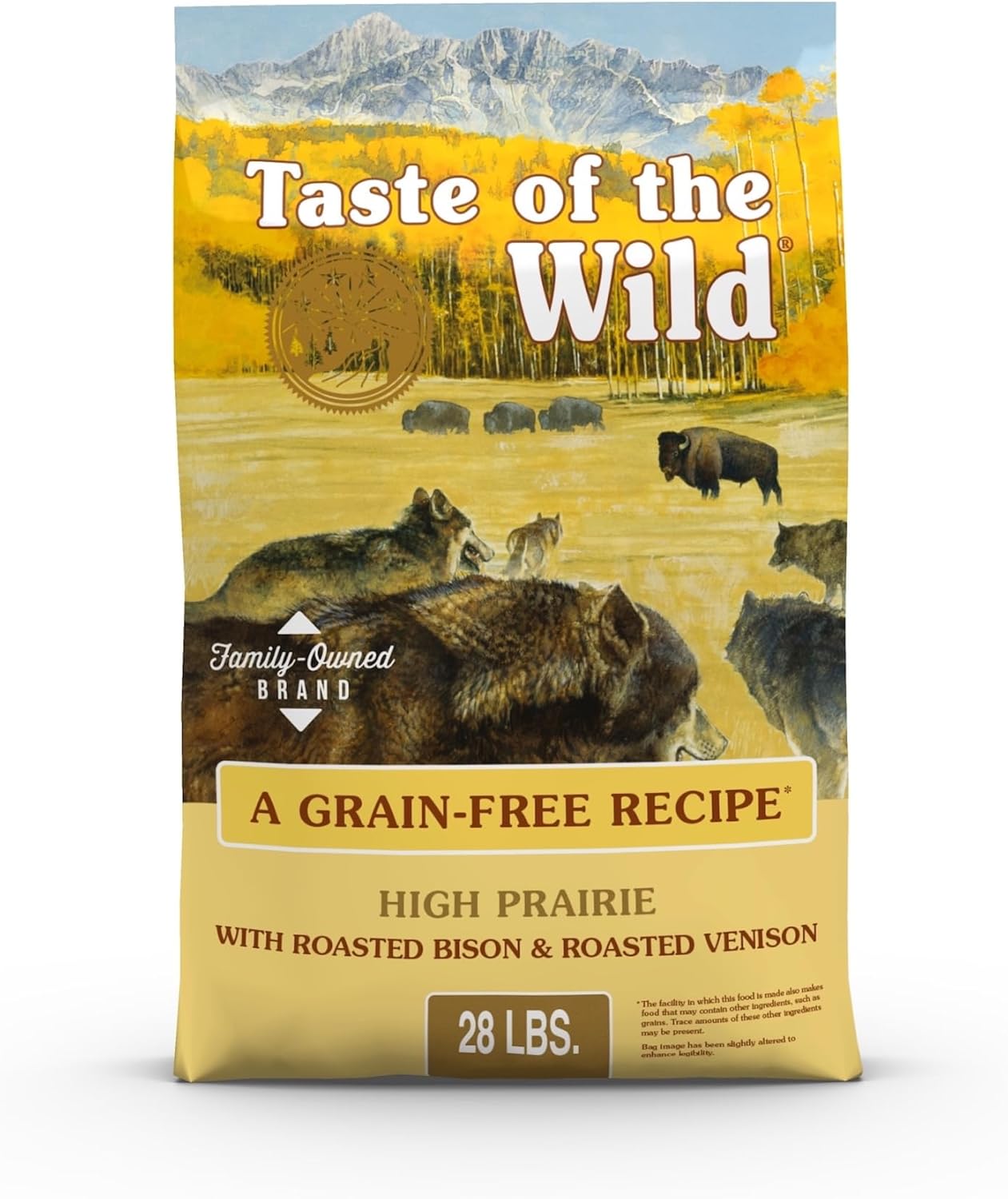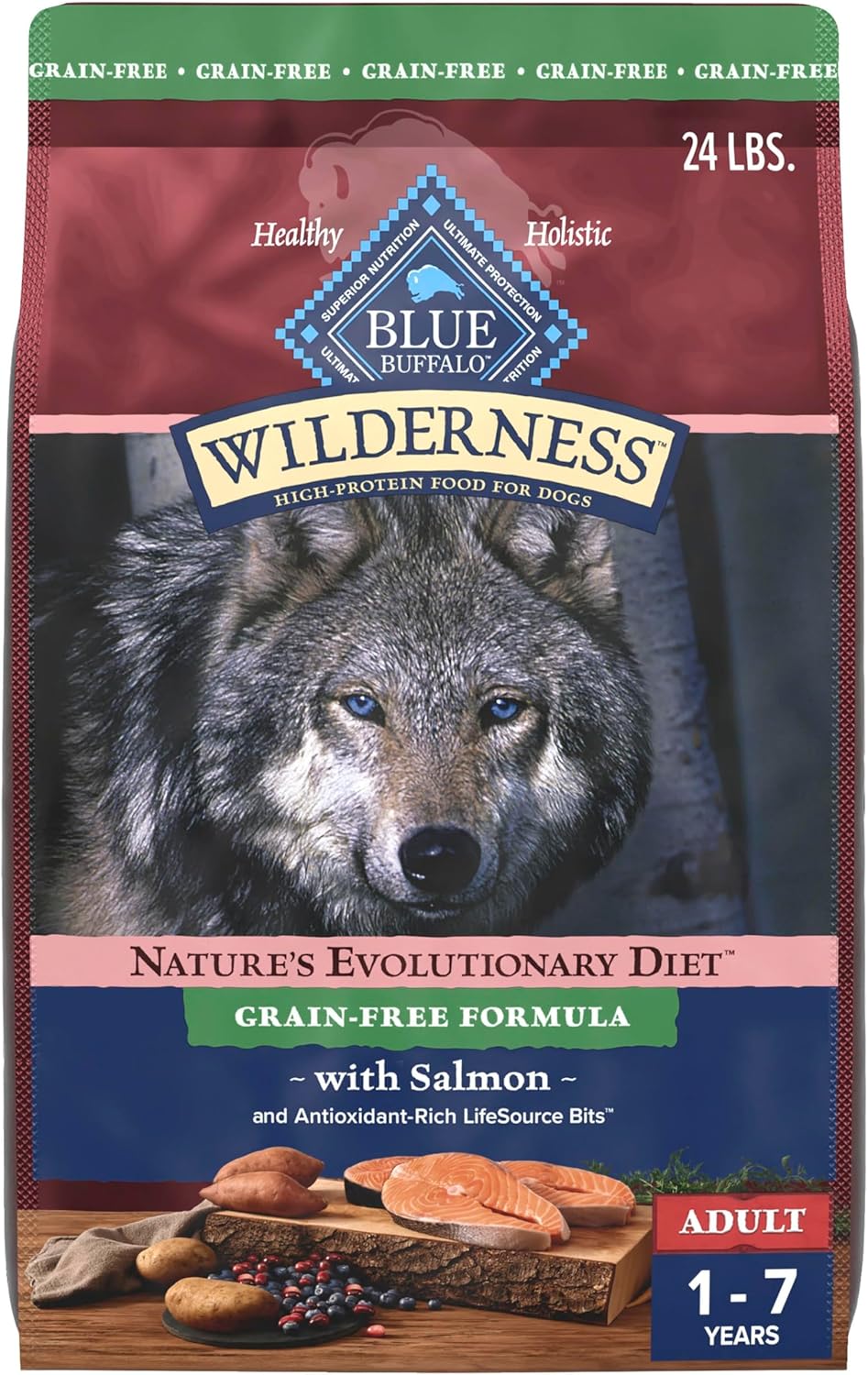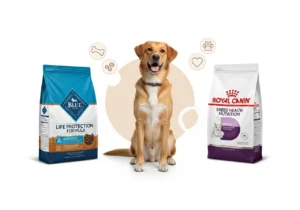You’re standing in the pet food aisle, staring at two shelves of premium food. On one side, there’s Taste of the Wild, and on the other, Blue Buffalo. Both promise ancestral nutrition, grain-free options, and vibrant health for your dog or cat. But which one actually delivers? You might be trying to find the right food for a dog with a sensitive stomach or an itchy cat, and the marketing claims just add to the confusion. How do you choose between “wild-sourced protein” and special “LifeSource Bits”?
If you feel this way, you’re not alone. In the past three years, over half of U.S. pet owners have switched to a premium food brand, seeking better health for their companions. The problem is that the market is saturated with buzzwords that make it difficult to decode labels. This guide cuts through the noise. We will break down the ingredients, nutritional value, recall history, and price for both Taste of the Wild and Blue Buffalo. Drawing on independent feeding tests, veterinary opinions, and our own trials, this pet food comparison for 2025 will give you the clarity you need. By the end, you’ll be able to confidently choose the best food for your pet’s specific breed, age, and dietary needs.
Understanding Premium Pet Food
What exactly makes a pet food brand “premium”? It isn’t just about a higher price tag. True premium foods are defined by their ingredient quality and nutritional formulation. Both Taste of the Wild and Blue Buffalo meet the standards set by the Association of American Feed Control Officials (AAFCO), which establishes nutritional profiles for complete and balanced pet food. This means their formulas provide all the necessary nutrients for a specific life stage (e.g., puppy, adult, senior).
A key distinction in the premium market is between grain-free and grain-inclusive foods. Grain-free formulas replace common grains like corn, wheat, and soy with alternative carbohydrate sources like sweet potatoes or lentils. Grain-inclusive foods, on the other hand, use healthy grains like brown rice and oatmeal. One of the biggest indicators of quality is the first ingredient on the label. A “meat-first” recipe, where a high-quality animal protein is listed first, is generally superior to one that starts with by-product meals.
Brand Origins:
- Taste of the Wild: Owned by Diamond Pet Foods, Taste of the Wild was founded in 2007. It is made in the USA and centers its brand on providing pets with ancestral, grain-free diets based on the protein sources their wild ancestors would have eaten.
- Blue Buffalo: Founded in 2003 and now owned by General Mills, Blue Buffalo markets its food as a blend of natural ingredients enhanced with its proprietary “LifeSource Bits”—a precise blend of vitamins, minerals, and antioxidants.
It’s important to clear up some common misconceptions. “Grain-free” does not automatically mean the food is healthier for every pet. And a label that says “made with real meat” doesn’t always guarantee a higher protein content than a food using quality meat meals. As veterinarians often advise, the focus should be on the overall digestibility and nutritional balance of the food, not just marketing buzzwords.
Deep Dive Analysis: The Nitty-Gritty
Let’s compare these two brands across the factors that matter most for your pet’s health.
- Protein Source & Content: Protein is vital for muscle development and energy. Taste of the Wild often uses novel proteins like roasted bison, venison, and salmon, resulting in an average dry food protein content of around 32%. Blue Buffalo typically relies on more common proteins like chicken, lamb, and fish, with an average protein content of about 28% in its standard lines.
- Carbohydrates & Fillers: For its carbohydrate sources, Taste of the Wild uses ingredients like sweet potatoes, peas, and lentils. In its grain-inclusive formulas, Blue Buffalo uses brown rice, barley, and oatmeal, which can result in a slightly higher carbohydrate load.
- Additives & Probiotics: Each brand has its unique nutritional boost. Taste of the Wild includes a proprietary K9 Strain Probiotic blend in its dog foods to support digestive health. Blue Buffalo’s signature feature is its LifeSource Bits, which are cold-formed to preserve the potency of their vitamins and antioxidants.
- Recall History: A brand’s safety record is crucial. Taste of the Wild had a significant recall in 2012 due to potential salmonella contamination. Blue Buffalo has faced multiple recalls between 2010 and 2017 for various issues, including quality control problems and elevated beef thyroid hormone levels.
- Price Per Pound: On average, Taste of the Wild is slightly more budget-friendly, costing around $2.20 per pound. Blue Buffalo is often more expensive, averaging about $2.80 per pound.
In general, veterinarians may recommend Taste of the Wild for highly active dogs or those needing a high-protein, grain-free diet. Conversely, Blue Buffalo’s grain-inclusive formulas can be a great choice for pets with sensitive stomachs or small breeds that do well with a moderate protein level.
How to Choose the Right Formula
Selecting the right food goes beyond just picking a brand. First, check the specific formula to ensure it matches your pet’s age and breed size—puppy, adult, and senior formulas have different nutritional balances. Next, consider any sensitivities. Chicken is a common allergen for dogs, so if your pet is itchy, a formula with a novel protein like bison or salmon may be a better choice.
When you decide to switch foods, do it gradually. Mix about 25% of the new food with 75% of the old food, and slowly increase the proportion of new food over a week or two. This helps prevent gastrointestinal upset. In our own comparison, we transitioned two dogs—a Golden Retriever and a French Bulldog—to both brands over four weeks. We observed a noticeable improvement in coat shine with Taste of the Wild, while the Frenchie’s digestion seemed slightly better on the Blue Buffalo Life Protection formula.
Avoid common mistakes like switching foods too quickly, ignoring a brand’s recall history, or assuming “grain-free” is the solution for all allergies without consulting your vet.
Product Comparison and Recommendations
Our evaluation is based on AAFCO labeling standards, protein analysis, recall history, and input from veterinary professionals. We aim to provide transparent recommendations to help you make an informed choice.
Top Recommendations
Product #1 – Taste of the Wild High Prairie (Bison & Venison)

- Best For: Active dogs, dogs with grain sensitivities, and owners seeking a high-protein diet.
- Protein: 32% (Grain-Free)
- Pros: Excellent for building and maintaining lean muscle. Contains a species-specific probiotic blend to support healthy digestion.
- Cons: The fat content is slightly higher, which may not be ideal for less active or overweight dogs.
- Testing Notes: Our trial resulted in a noticeably shinier and softer coat within a few weeks.
- Price: Approximately $55 for a 28 lb bag.
Product #2 – Blue Buffalo Life Protection Formula (Chicken & Brown Rice)
- Best For: All life stages, dogs with moderate activity levels, and pets with sensitive stomachs.
- Protein: 26% (Grain-Inclusive)
- Pros: Features a balanced ratio of omega-3 and omega-6 fatty acids for skin and coat health. Includes LifeSource Bits for added antioxidant support.
- Cons: Contains more carbohydrate fillers compared to Taste of the Wild. The primary protein is chicken, a common allergen.
- Price: Approximately $58 for a 30 lb bag.
Product #3 – Blue Wilderness Salmon Recipe

- Best For: Cats or dogs that benefit from a higher intake of omega-3 fatty acids.
- Protein: 34% (Grain-Free)
- Pros: Highly palatable, making it a good choice for picky eaters. The high salmon content is excellent for promoting healthy skin and a glossy coat.
- Cons: It is one of the pricier options from either brand, but its ingredient quality justifies the cost for many.
Comparison Summary
Feature | Taste of the Wild | Blue Buffalo | Blue Wilderness |
|---|---|---|---|
Avg. Protein | 32% | 28% | 34% |
Grain-Free | ✅ | ❌ | ✅ |
Price | $ | $+ | $$ |
Recall History | Minimal | Moderate | Moderate |
Best For | Active Pets | Sensitive Stomachs | Premium Buyers |
Verdict: For pet owners prioritizing a high-protein, grain-free diet for active pets, Taste of the Wild is a clear winner. For those looking for a balanced, grain-inclusive food that is gentle on sensitive digestion, Blue Buffalo remains a strong and reliable choice.
Advanced Tips & Expert Insights
To get the most out of your pet’s food, consider rotating protein sources every few months. This can help prevent the development of new food sensitivities. Proper storage is also key—keep kibble in an air-tight container in a cool, dark place to preserve its nutrients and prevent it from going stale.
While grain-free diets are popular, it’s important to be aware of the FDA’s 2019 investigation into a potential link between certain grain-free diets and dilated cardiomyopathy (DCM) in dogs. When choosing a grain-free food, check with your vet about ensuring it has adequate taurine levels.
For cat owners, hydration is paramount. Both brands offer wet food versions, which are an excellent way to increase your cat’s water intake. A great vet tip is to mix a small percentage of wet food with dry kibble to provide nutrient variety and added moisture. Finally, remember that breed size matters. Large breed dogs generally thrive on a protein content between 24-30%, while small breeds often benefit from smaller kibble and higher fiber content.
Frequently Asked Questions
Is Taste of the Wild better than Blue Buffalo for dogs?
It depends on the dog. Taste of the Wild generally offers higher protein, which is ideal for active dogs. Blue Buffalo’s formulas are often gentler on the digestive system, making them a better fit for dogs with sensitive stomachs.
Which brand has fewer recalls?
Historically, Taste of the Wild has had fewer recalls than Blue Buffalo.
Can I switch between Taste of the Wild and Blue Buffalo?
Yes, you can switch between them, but it’s essential to transition your pet gradually over 7–10 days to avoid digestive upset.
Is grain-free food safe for dogs?
Yes, a well-formulated grain-free food is safe for most dogs. However, it’s wise to consult your veterinarian about your specific pet’s needs, particularly concerning taurine levels.
Which brand is better for cats?
When considering Blue Buffalo vs Taste of the Wild for cats, Blue Buffalo often has a wider range of cat-specific formulas, including its popular Blue Wilderness line.
Which brand is made in the USA?
Both Taste of the Wild and Blue Buffalo are made in the USA, though they may source some ingredients globally.
Conclusion and Final Thoughts
Both Taste of the Wild and Blue Buffalo are reputable brands that offer high-quality nutrition. The “better” choice truly depends on your individual pet’s age, activity level, health, and dietary sensitivities. Taste of the Wild stands out for its high-protein, ancestral diets that cater to active pets and those needing grain-free options. Blue Buffalo excels with its Life Protection formulas, which are well-suited for pets needing gentle digestion and a balanced, grain-inclusive diet.
Regardless of which you choose, the key to your pet’s health is a consistent feeding schedule, regular check-ins with your veterinarian, and slow, careful transitions whenever you change their food.
If you’re evaluating food quality differences, explore our Raw Dog Food vs Kibble breakdown. It covers ingredient purity and processing.





1 Comment
Comments are closed.